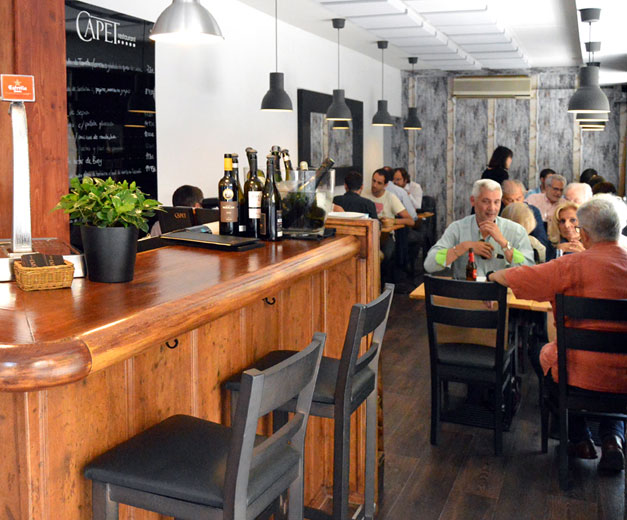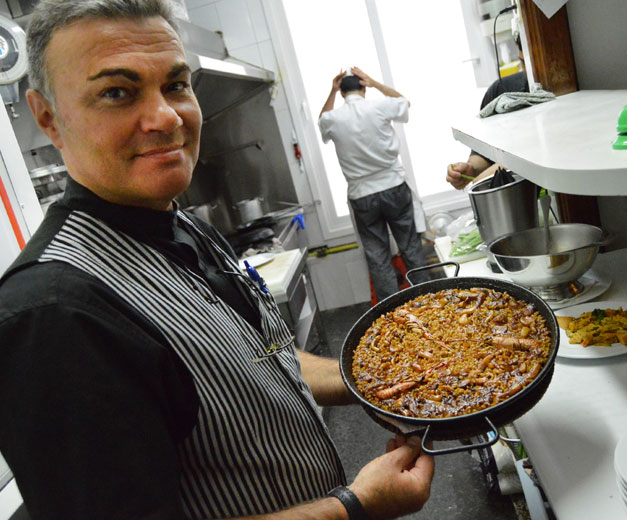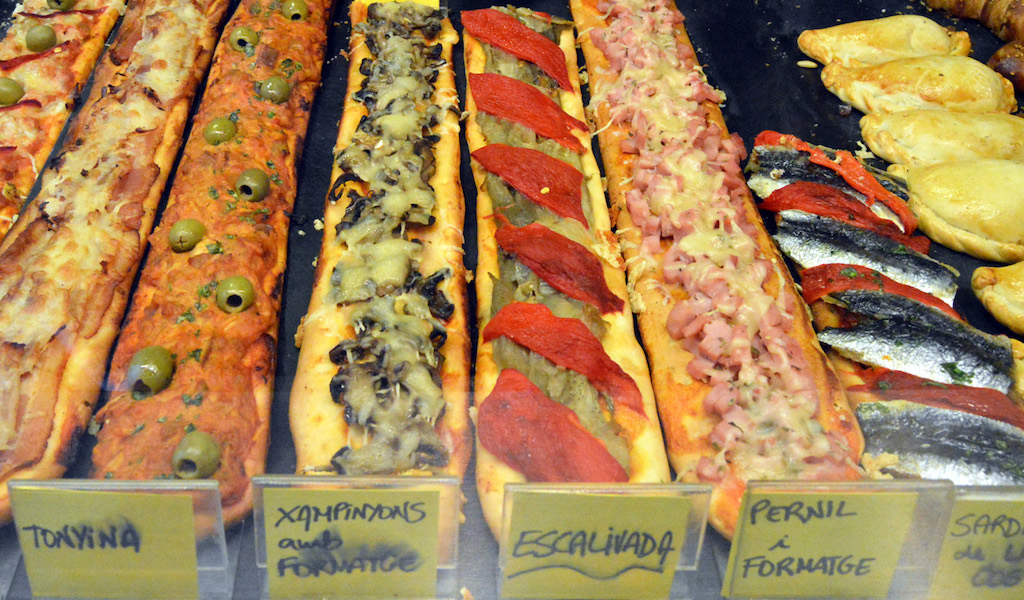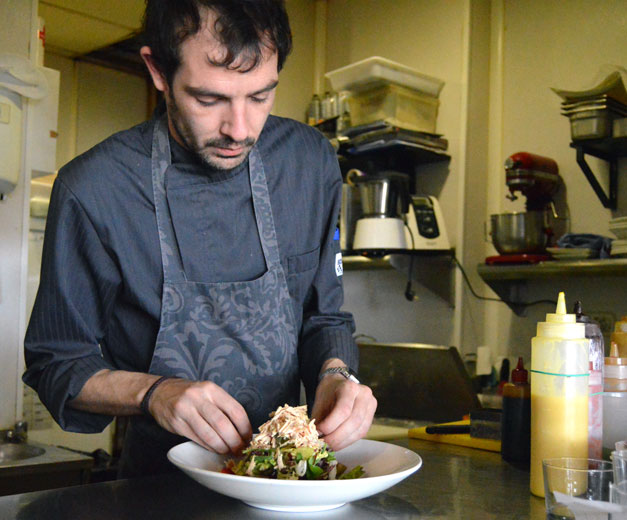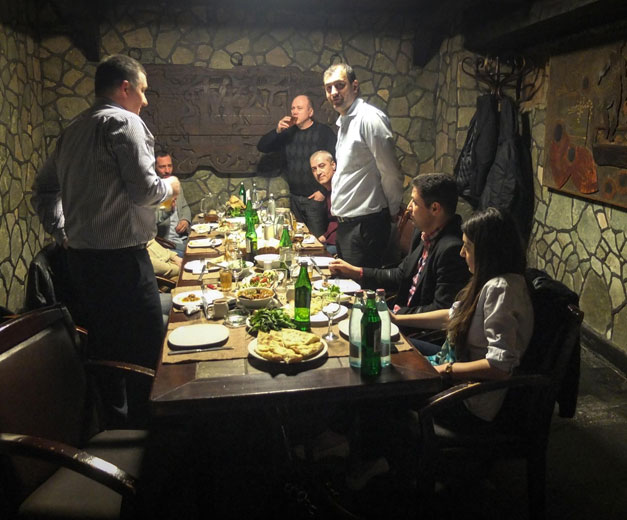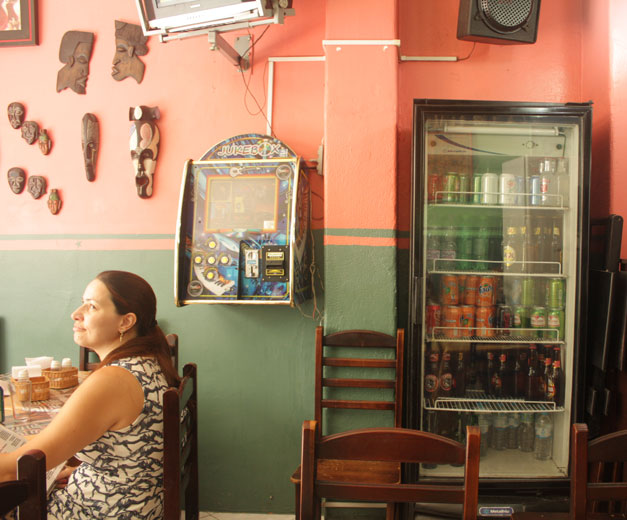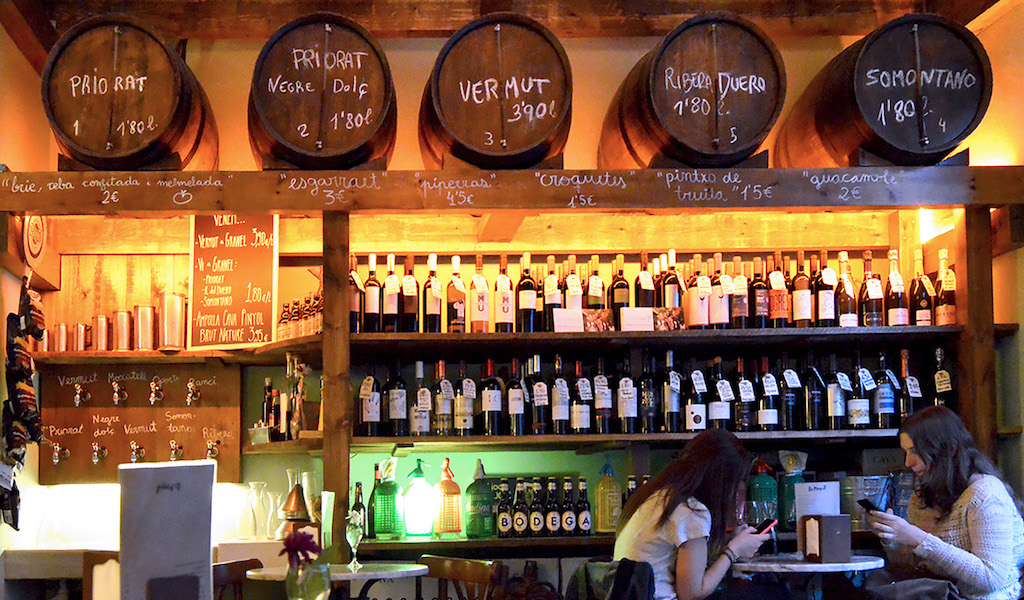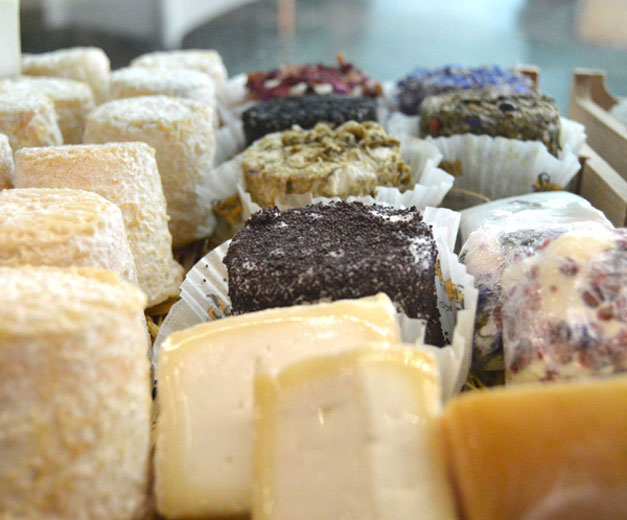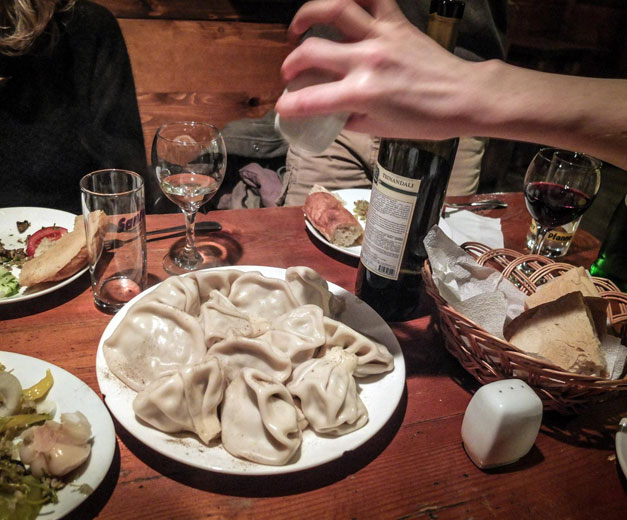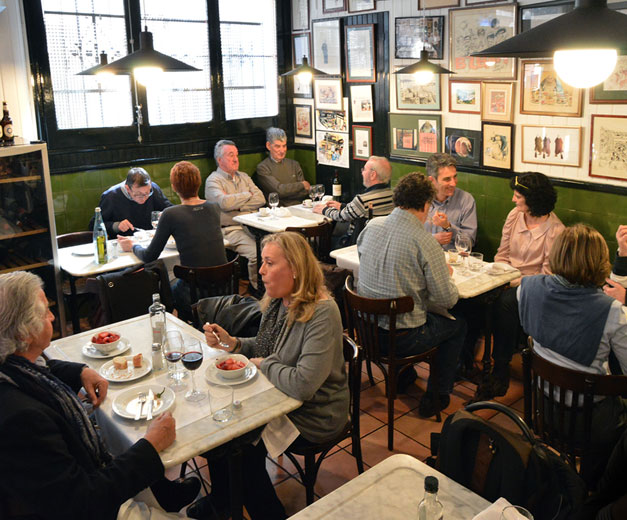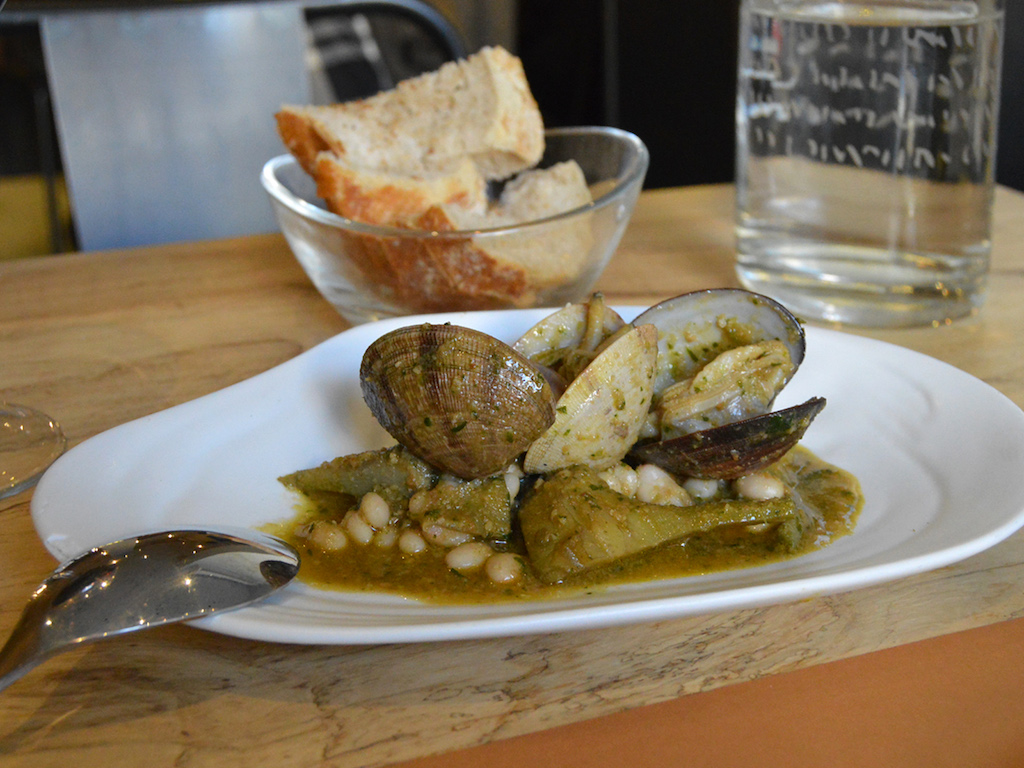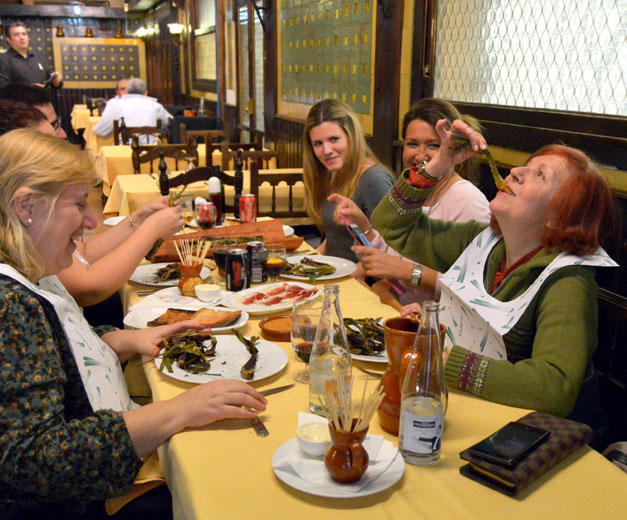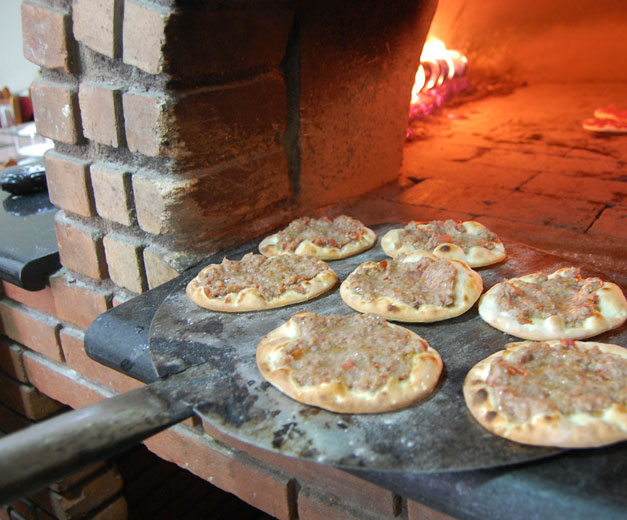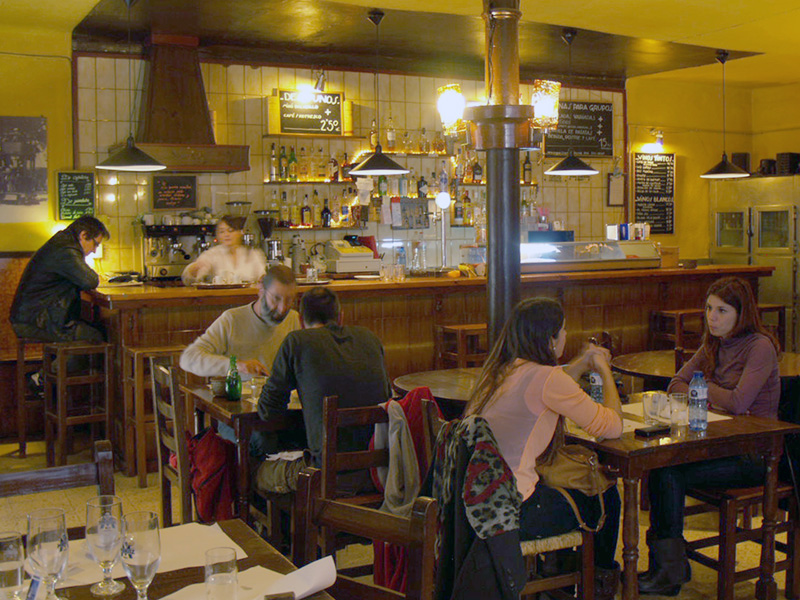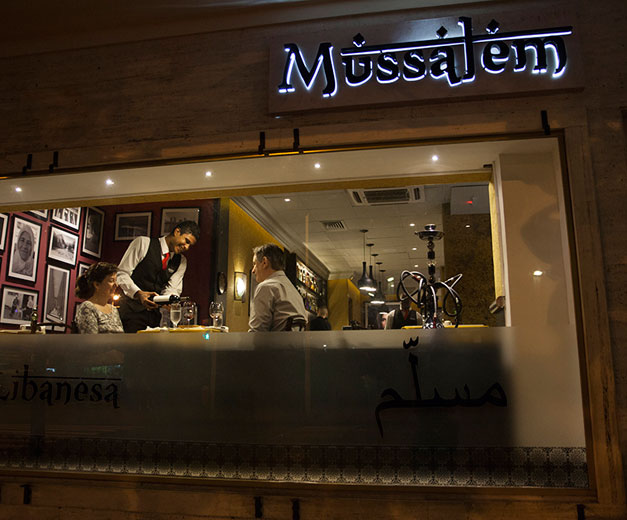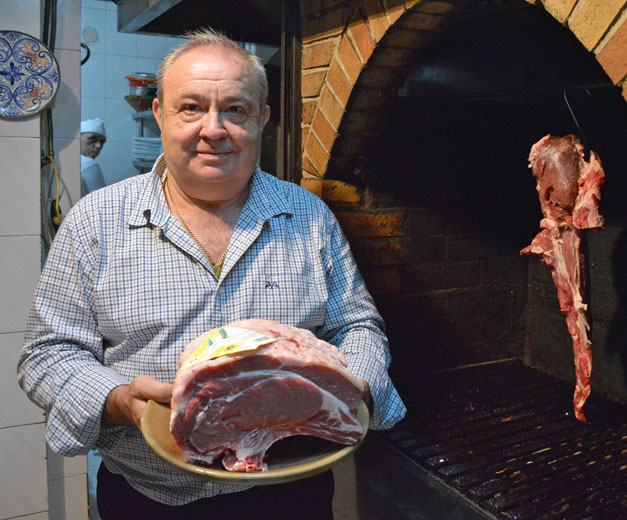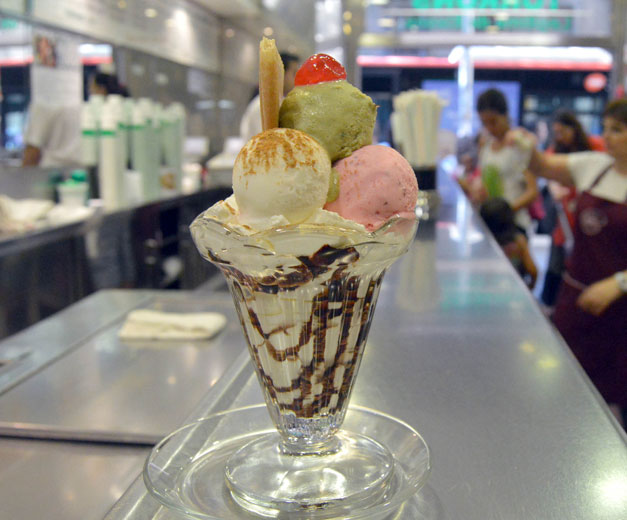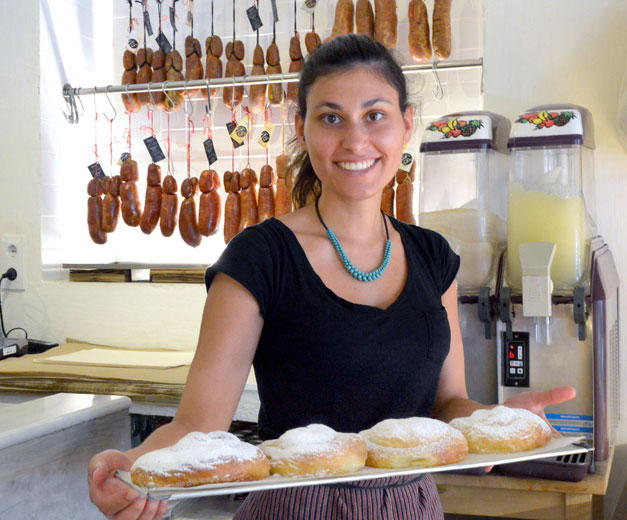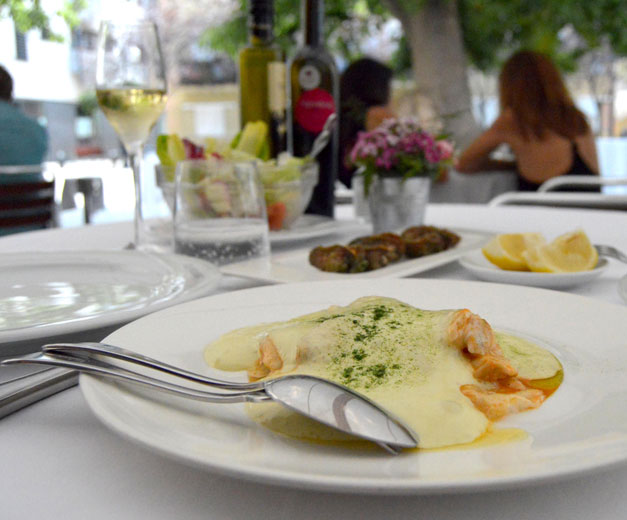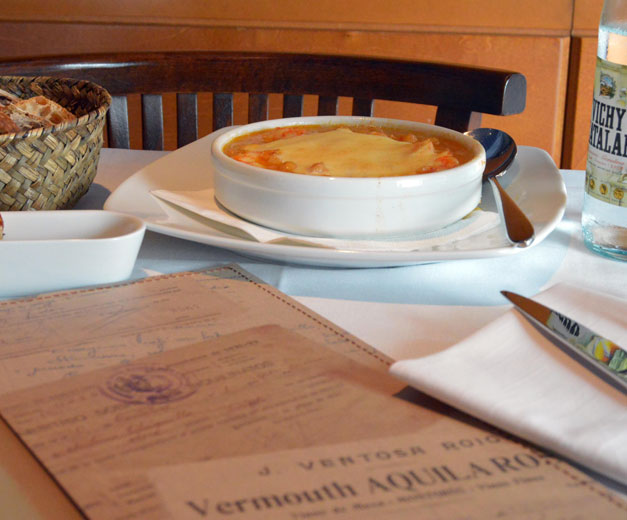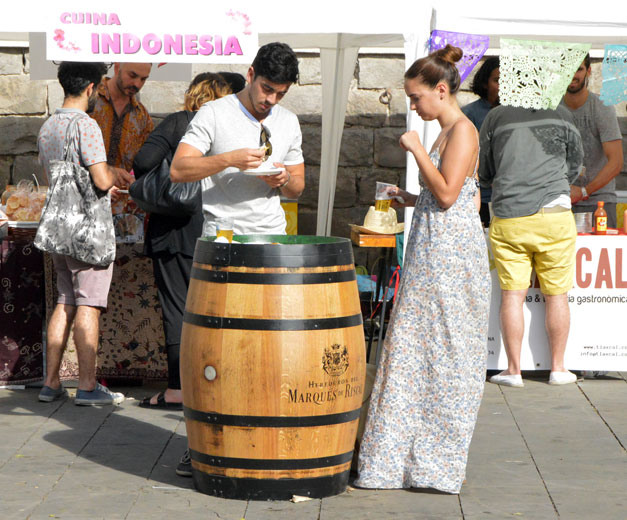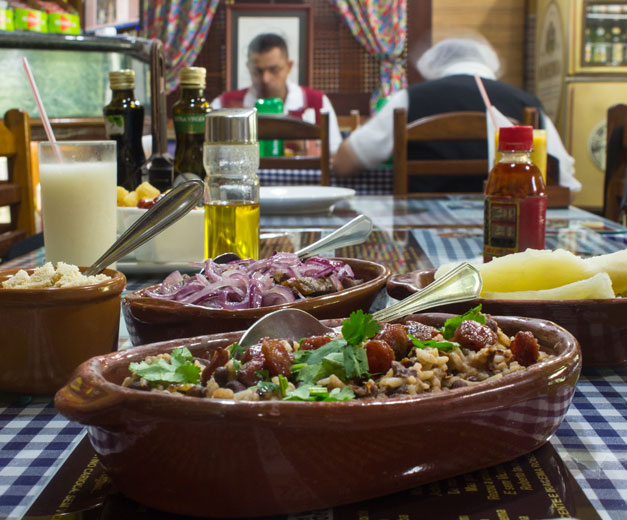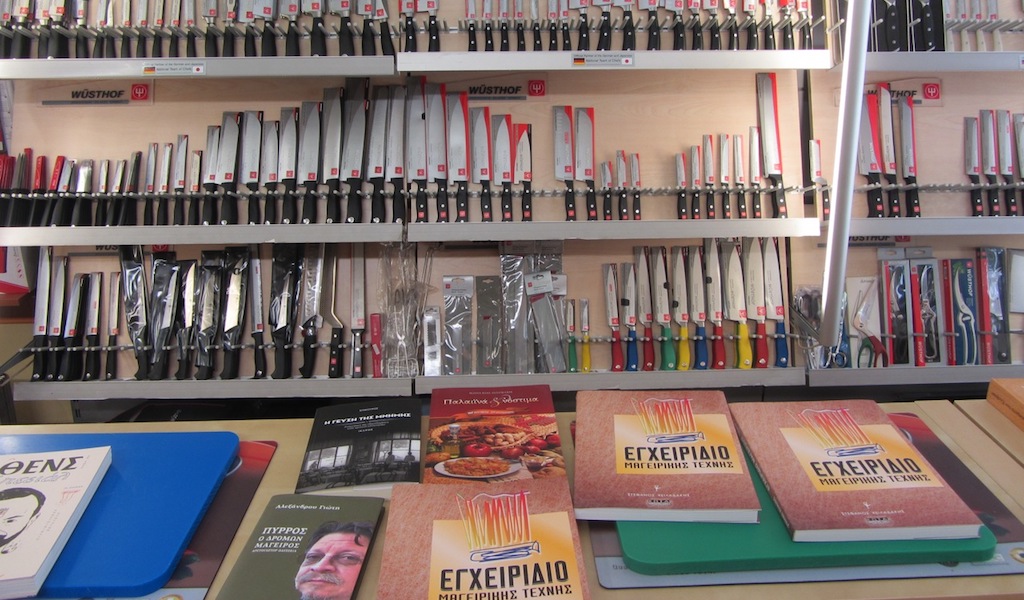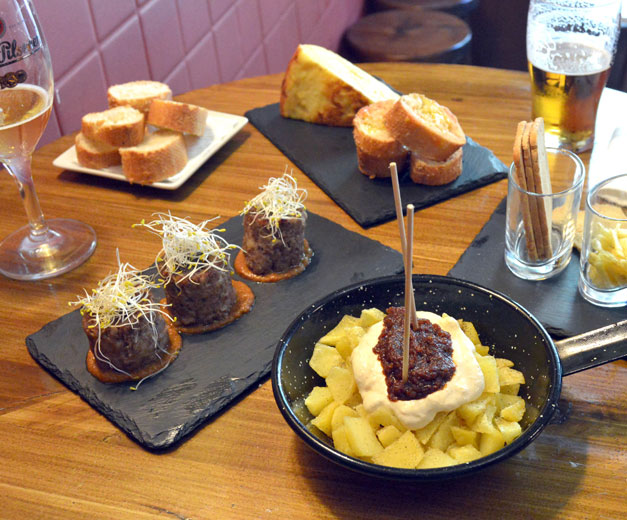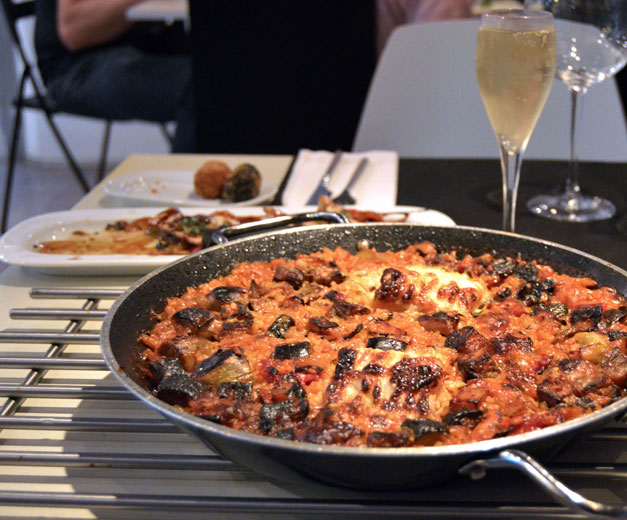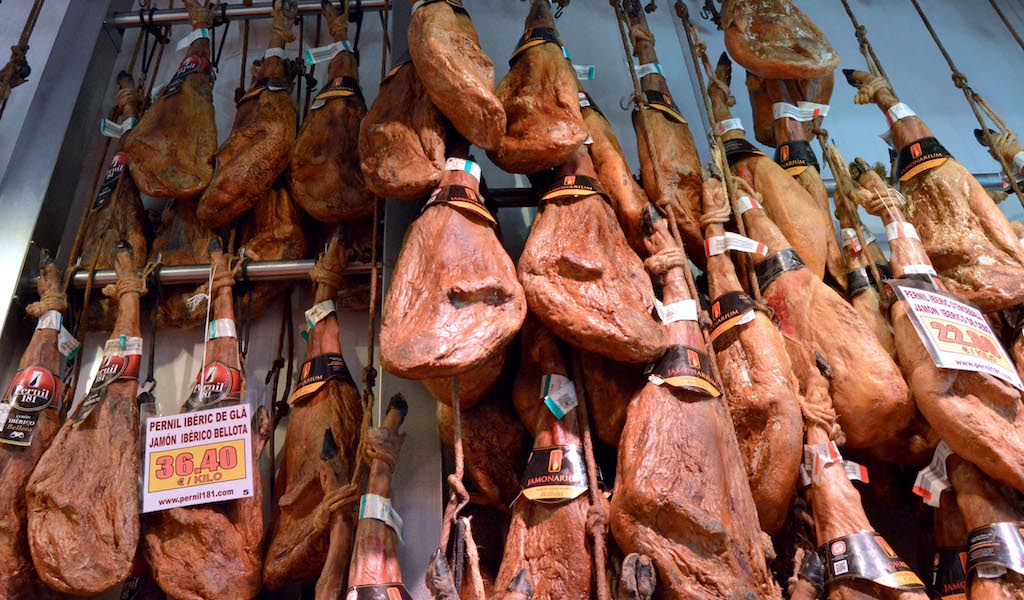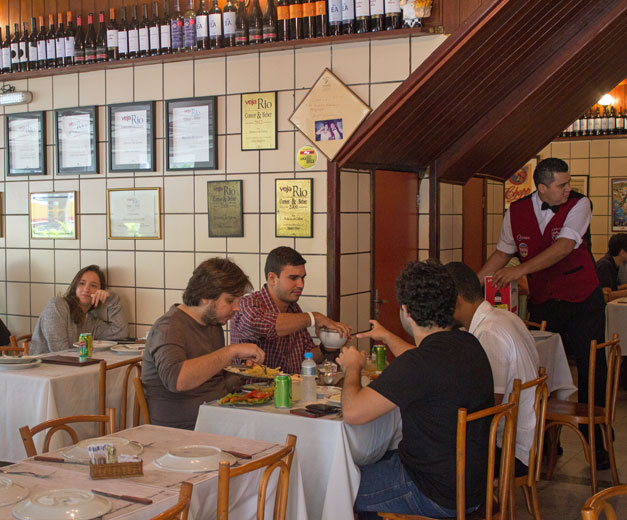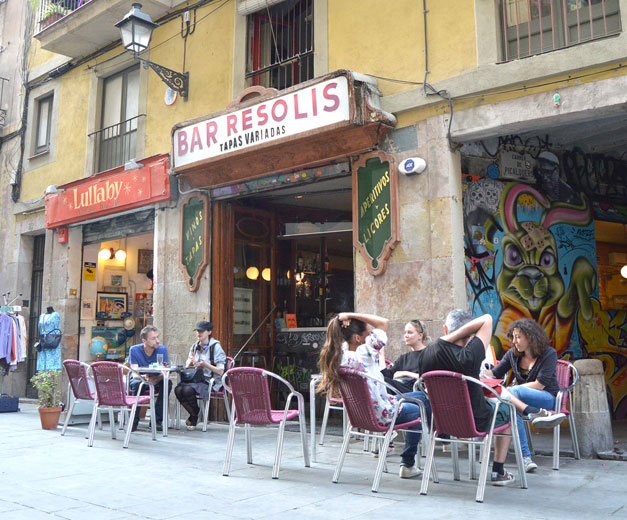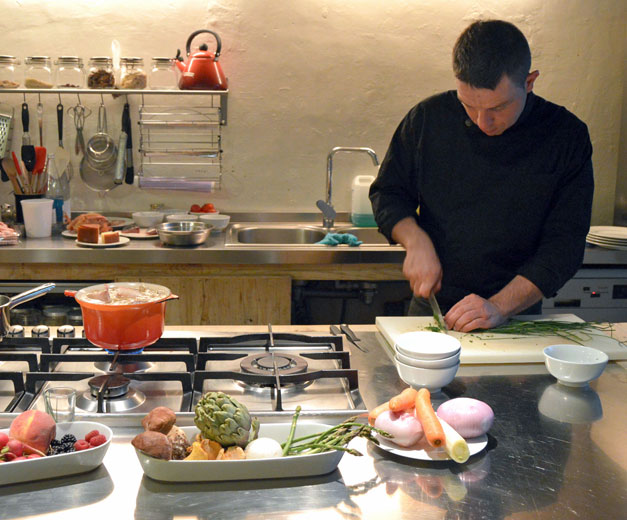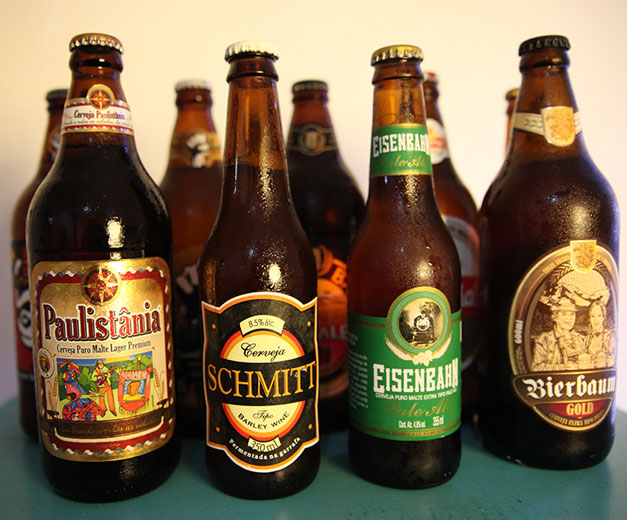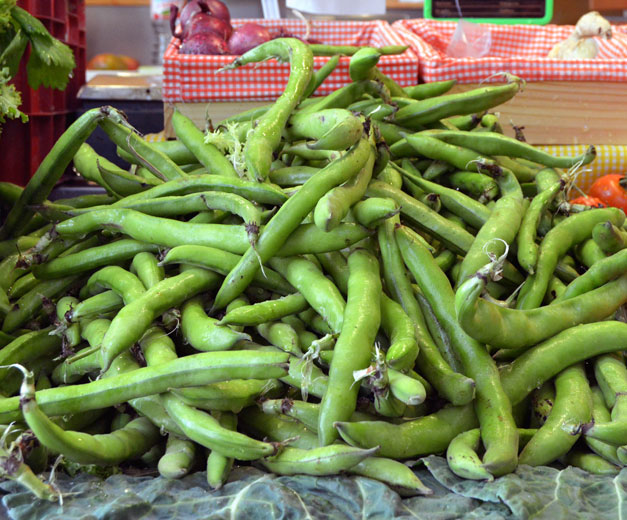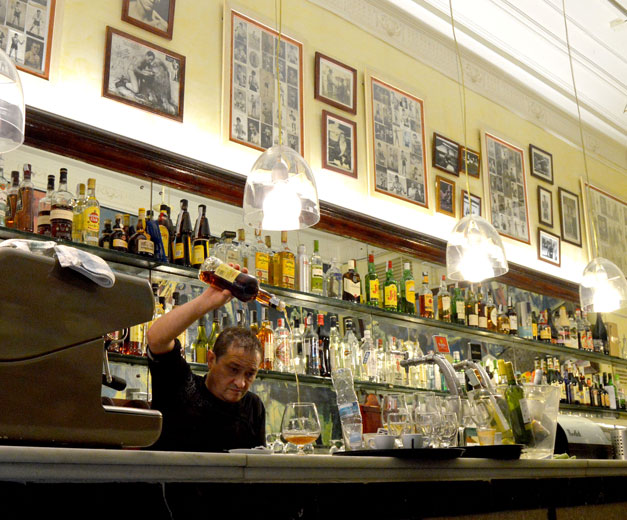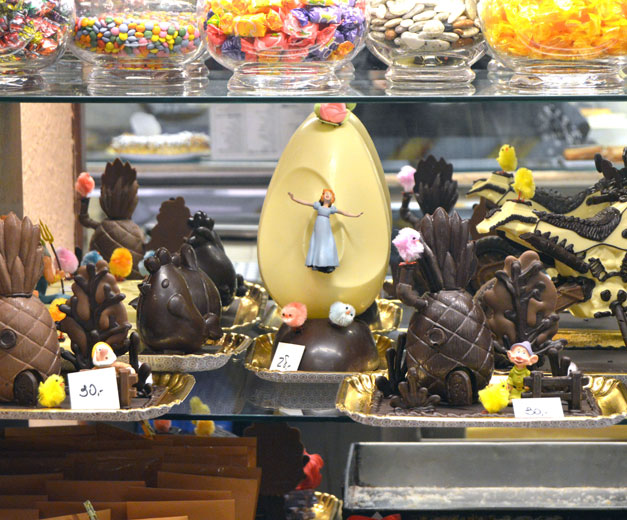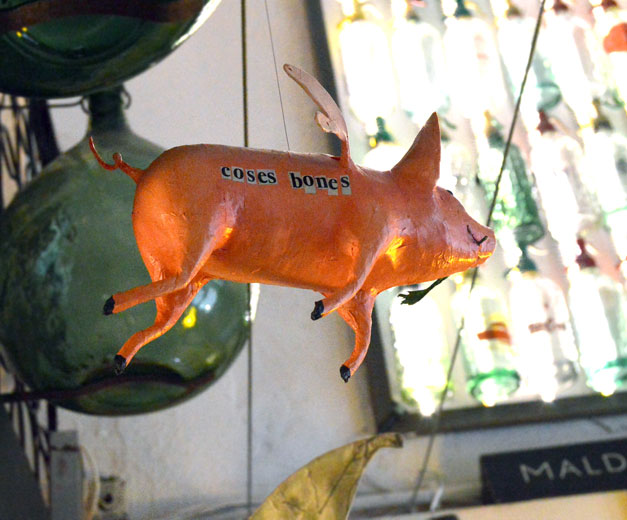We can't find the internet
Attempting to reconnect
Something went wrong!
Hang in there while we get back on track
Search results for word=paul+r
Barcelona
Capet: Small Wonder
Spain – and of course Barcelona – has always been a breeding ground for creative types in the kitchen. There’s an ever-increasing number of restaurants that take as inspiration first traditional preparations and update them with ingredients from a global pantry, yet keep their local soul intact. It’s a common thread among many young chefs in this town, and it has created a culinary scene that feels modern, unexpected – and personal. Let’s throw in an additional twist: a chef who’s not Spanish.
Read moreBarcelona
Coca de Recapte: Flat Food
Coca is a word used in Catalonia and neighboring regions for many kinds of baked doughs and pastries, both sweet and savory. The Catalan and Occitan word has the same root as “cake” and comes from the Dutch word kok, which entered the local lexicon during the reign of the Carolingians in Catalonia (759-809)
Read moreBarcelona
El Kaiku: On the Waterfront
Editor’s note: We regret to report that El Kaiku has closed. “We have paper tablecloths and napkins on the tables for two reasons: to not forget our roots as a workers’ canteen and because we prefer to spend the money on good product for our customers.” That was how Rafa Alberdi explained to us one of the keys to his restaurant, El Kaiku. Located in Barceloneta in front of what was once shipyards, the working man’s bar was transformed into an excellent neighborhood restaurant, where diners can enjoy cooking with traditional roots and modern leanings made from locally harvested seafood and other ingredients. The lovely terrace, one of our favorites in this city, is a boon as the weather warms up.
Read moreTbilisi
Alani: No Brainer
Last week we had a hankering for baked brains, and in Tbilisi that used to mean only one thing – a visit to Alani, the Ossetian restaurant near the sulfur baths in Old Tbilisi. The venue is named after the ancient North Caucasus kingdom of the Alans, ancestors of the modern-day Ossetians; one might think this unpopular in a country that lost a war against Ossetian separatists (and Russians) in 2008, but the fact that it is highly regarded is testament to Georgia’s paradoxically tolerant nature. Of course, it helps to have consistently quality cooking too.
Read moreRio
CB on the Road: Daytripping in Niteroi
From 6 a.m., Tuesdays through Sundays, over 500 customers – from housewives to Michelin-starred restaurateurs – stream into a two-story, tile-front fish market in working-class Ponta d’Areia, a neighborhood in Niteroi, across Guanabara Bay from Rio de Janeiro. Since 2 a.m., stall owners have been out greeting fishing boats at docks across the city, where captains return from four- to 10-day trips along Brazil’s southeast coast, up to the Lake Region (Região dos Lagos, which includes the cities of Maricá, Saquarema and Cabo Frio, still in Rio de Janeiro state) and south to the state coastlines of São Paulo, Paraná and Santa Catarina.
Read moreElsewhere
Biyou'Z: African Roots
Melanito Biyouha's restaurant in São Paulo’s gritty Centro is a social sort of place. The salmon-pink dining room opens to the street, inviting passers-by to stop, bate-papo, talk football and grab a cold drink from the fridge. Others sit at tables and fill out immigration forms or apply for jobs. Everyone stays for the food, prepared in the tiny open kitchen.
Read moreBarcelona
Lo Pinyol: Book Club
Bars and literature are like bees and flowers: two separate worlds linked to each other through a symbiotic relationship that benefits both. Writers and characters have been the natural inhabitants of taverns and pubs in Dublin and London, bohemian cafés in France, Vienna and Madrid, and, of course, the old neighborhood restaurants and bodegas of Barcelona.
Read moreBarcelona
Catalan Cheese, Part 1: Reviving Old Traditions
Update: Poncelet Cheese Bar is sadly no longer open. Many gastronauts come to Barcelona in search of tapas or cutting-edge cooking, but rarely cheese. We think that should change. Catalonia, after all, produces the greatest variety of artisan cheeses of all the regions in Spain, with more than 150 kinds at last count, many of them made by small producers or in milk cooperatives in the mountains using both pasteurized and raw milk from cows, sheep or goats. While in the past, in order to taste these cheeses, one had to travel to the often-tiny village where a specific cheese was made, nowadays it’s much easier to find them at markets, specialized shops, restaurants and bars in Barcelona.
Read moreTbilisi
Vino Underground: Wine Heaven
Ènek poured a rosy-colored splash of wine into our glasses, avidly explaining how this particular Aladasturi grape vine was meticulously cultivated in its native west Georgia. In a tasting ritual uncommon in Georgia, we swirled it, sniffed it and savored the flavor as it caressed our tongues. Here in the “cradle of wine,” the land where viticulture is believed to have originated 8,000 years ago, wine is customarily poured into a water glass and “tasted” in one long drag, until drained. But in this cozy cellar in the heart of Tbilisi’s historic Sololaki neighborhood, seven winemakers have come together to offer an alternative convention to winemaking and consumption. They call it Vino Underground, but we call it wine heaven.
Read moreTbilisi
The Khinkali Chronicles: Part 1, Pasanauri
It was in 2007, when, on a hunger-induced whim, we called a friend and asked him to meet us for lunch at a new place that had been beckoning from a Rustaveli Boulevard side street for some weeks. Tbilisi’s main drag was bereft of quality, low-priced eats, and the down-home warmth wafting down the street offered the promise of good fortune. This was before the homey little joint was known, a time when our party of two could occupy the eight-top under the window instead of the surrounding cozy, semi-enclosed booths.
Read moreBarcelona
Bilbao: The Family Jewel
Pere Valls Isart is passionate about his restaurant, Bilbao, which his family bought, with the name already in place, in 1954. “This is the thing that I most love in the world,” he told us. “This is my life!” Bilbao is an old-school neighborhood restaurant of the first degree, with two comfortable rooms appointed with mismatched vintage – yet impeccably maintained – marble tables, colorful paintings, photos, drawings and infinite memories.
Read moreBarcelona
La Ruta del Bacallà: Follow the Fish
Salt cod has been a staple on the Iberian Peninsula for centuries, but in the last few decades overfishing and changes in eating habits have resulted in a significant drop in bacallà consumption. Only recently has the fish begun returning in greater numbers to our tables, and it has also become the focal point for an annual gastronomic celebration: La Ruta del Bacallà. There’s a popular saying on the Iberian Peninsula that there is one cod recipe for every day of the year, but in truth, the number is upwards of 500. In Spain, there are hundreds of cod recipes dating from the Middle Ages, with a multitude of regional variations. The most notable and sophisticated ones come from Basque country and Catalonia.
Read moreBarcelona
La Panxa del Bisbe: Mountain Man
Here we are in the Bishop’s Belly, La Panxa del Bisbe, which is not the midsection of a Catalan priest, but both a restaurant and a mountain. The latter is one of the peaks of the sacred Catalan mountain of Montserrat, so-called because its shape evokes a small head over a rotund, pronounced belly. It’s frequented by numerous mountain lovers, like Xavi Codina, chef and owner of a restaurant that he named in honor of the peak. The restaurant La Panxa del Bisbe sits not in Montserrat, but in upper Gràcia, in Barcelona, very close to Codina’s home.
Read moreBarcelona
Can Manel: A Winter's Table
Editor’s note: We regret to report that Can Manel has closed. We don’t mind winter in Catalonia because it means the return of calçots, our beloved spring onions, and calçotadas, the wonderful celebrations that bring people together to eat them. While tradition usually calls for calçot eating to take place in the countryside, there are plenty of places to enjoy them in Barcelona as well. Since 2012, when Can Manel was reopened by the new owners Joel Balagué and Ana Roig, this homey eatery near the Sants train station has become a point of reference for the urban calçotada.
Read moreElsewhere
Levantine São Paulo: A New Start in the New World
If stepping foot in Brazil doesn’t make your taste buds start tingling in anticipation of kibes (bulgur wheat croquettes), esfihas (thin meat and cheese pastries), tangy molho arabe and hummus, it’s because you haven’t studied up properly on the rich history of Arab migration to Brazil – and the supremely tasty gastronomical mark it’s left on this country’s snack food culture.
Read moreBarcelona
Lata Berna: The Tin Man
The name of this appealing Gràcia eatery is a play on words, an amalgam of la taberna, or “tavern,” and lata, or “tin.” Owner and head chef Juanjo Martínez has dedicated his restaurant to the culture of canned food and other uncanned treasures that are linked to traditional Spanish tapeo and rituals like vermut hour, which always include preserved foods.
Read moreBarcelona
Casa Pagès: To Grandma’s House We Go
Not far from the Gràcia neighborhood’s glittering Paseo de Gràcia can be found a completely different world of narrow, unassuming side streets. Once populated by Catalan Gypsies, the area is fondly remembered as one of the cradles of rumba catalana, a popular fusion of flamenco, mambo and rock and roll, and as the birthplace of Antonio “El Pescaílla” González, a legendary flamenco guitarist who was one of the genre’s founding fathers.
Read moreBarcelona
Eat the Vote: Food and Catalan Independence
On November 9, Catalonia conducted a straw poll on independence, with more than 80 percent voting in favor of secession, and more than 10 percent voting for statehood without independence. In spite of a ruling from Spain’s Constitutional Court to suspend the vote, the regional government, under the leadership of Catalan president Artur Mas, was able to proceed with this more symbolic poll thanks to support from 40,930 volunteers. The general atmosphere was civil and calm, but the prevailing mood was clear from the numerous flags, pro-independence T-shirts and yellow signs everywhere proclaiming, “We want a new country!”
Read moreRio
Mussalem: Lebanese Roots
The second-richest man in the world. A five-foot-two, billboard-topping, belly-dancing bilingual pop singer. A right-wing São Paulo governor, mayor and congressman wanted in the U.S. on charges of money laundering of the multimillion-dollar order. Three presidents of Ecuador and one of Colombia. Together they speak to a hemispheric truism: In Latin America, Lebanese immigrants and their descendants are a force to be reckoned with.
Read moreBarcelona
Mercat de Mercats: Barcelona's Market Festival
La Boquería is undoubtedly one of the most famous markets in the world, but there are 43 markets spread across Barcelona, each with its own unique charms. Once a year, they can be experienced all at the same time, in the same place. From October 17 to 19, 265,000 visitors thronged the square in front of Barcelona Cathedral for the fifth edition of the Mercat de Mercats (Market of Markets) festival, which gathered 40 stalls, 30 local artisan producers, 40 chefs with 17 Michelin stars between them and 14 of the city’s best restaurants. The festival offers an amazing opportunity for locals and tourists to taste the dazzling array of Catalan flavors and to get to know the city’s neighborhood markets.
Read moreBarcelona
O Meu Lar: Galician Surf y Turf
Galicia, the autonomous region in northwest Spain, is famous for its extraordinary beef and – with its lengthy Atlantic coastline – an abundance of spectacular seafood. Barcelona has a slew of Galician eateries, ranging from the most expensive and famous seafood restaurants with valet attendants to humble establishments occupying the most out-of-the-way corners of the city. In the middle are the interesting neighborhood eateries that offer food cooked with great care, using excellent ingredients and offered at fair prices. Among these, O Meu Lar is one of our favorites.
Read moreBarcelona
Catalan Ice Cream: The Real Scoop
As you might expect from a city whose weather forecast tends to be sunny, Barcelona has plenty of excellent ice cream options, even as summer fades into fall. And, sure, like most of the world’s food-loving metropolises, this town has its share of internationally loved, Italian-style gelaterias – many even run by real, live Italians.
Read moreBarcelona
Butifarring: Tubular Gastronomy
[Editor's note: we're sorry to report that Butifarring is now closed.] Gourmet fast food has swept through Spain at full speed. It comes in multiregional styles and with strong creative inspiration behind it – and, most importantly, the food itself can be exceptional.Eric Camp, Albert Gómez and their three partners are a good example of this, with their sausage-centric project, Butifarring, and their first small venue in Barrio Gòtico, which is much more than a Catalan hot dog or sandwich place.
Read moreBarcelona
Idò D.O. Balear: The Endless Summer
It’s not unusual for travelers from Mallorca, Menorca or Ibiza to land in Barcelona (just a one-hour flight away) with an ensaimada in hand. The delicious, sugar-dusted spiral of dough is one of the Balearic Islands’ typical pastries and a sweet reminder of one of Spain’s most touristed and celebrated destinations for summer trips or weekend getaways. Toward the end of the summer holiday season, there’s a special place we Barcelonans can visit in our own fair city to make those sun-soaked, beach-bound days last just a little longer.
Read moreMexico City
Hamburguesas a la Parrilla: The Real Hamburgers of Mexico City
In the past couple of years, in the fashionable neighborhoods of Mexico City, a panoply of high-class hamburger joints has opened. To delineate their distinction from anything to do with Mexico, most of them have names in English, and their menus offer burgers fashioned from ground sirloin, Kobe or Wagyu beef, with toppings as diverse as imported Stilton, caramelized onion and even foie gras. Their decoration is similarly varied, from sidewalk café to faux diner to intimate and candlelit. Perhaps predictably, at these emporiums the clients pay as much for a burger as they would in New York, Los Angeles or maybe even Tokyo.
Read moreBarcelona
Els Pescadors: A Fine Kettle of Fish
Anchoring one end of Poblenou’s quiet and lovely Prim Square, Els Pescadors sits surrounded by the white houses that once belonged to the fishermen for which it’s named. The old tavern opened in 1848, and through the 19th century, it was frequented by those fishermen, as well as workers from the numerous textile factories in the area. The factory workers earned a little extra by fishing along the nearby beaches.
Read moreBarcelona
La Estrella: Grand Dame
An old star from the previous century still shines brightly in Port Vell. Renovated in 1992, La Estrella is a small, comfortable restaurant that serves simple but refined Catalan dishes, thoughtfully prepared from quality local products. The atmosphere is formal but relaxed, quiet and friendly, with the time kept by the discreet sounding of three wall clocks. It feels like eating in someone’s home.
Read moreBarcelona
CB on the Road: Madrid's New Wave Markets
On recent visits to Madrid, we’ve noticed that a new breed of food market has taken hold of the city’s attention. While the traditional kind with food stalls slowly disappears, vibrant, culture-focused gastromarkets are booming. In addition to great food, they offer a mix of businesses, along with cooking demos, live music, exhibitions – the list goes on. In 2009, the private society El Gastródomo de San Miguel refurbished a beautiful building that was built in 1916 and located very close to Plaza Mayor. It was opened as the “culinary space” Mercado de San Miguel. Though the initial inspiration was Barcelona’s La Boquería, San Miguel is utterly different, with its own colorful, unique personality. The market is dedicated not just to selling quality seasonal foods, but also to allowing visitors to enjoy them in situ, at tables and chairs distributed throughout common areas. They can choose from cod, fresh shellfish and other seafood, various vermuts, pickles and olives, paella, churros, Spanish wines, international beers, delicious Iberian ham and cured sausages and cheeses, ice cream and non-Spanish items, such as pasta or sushi. Unsurprisingly, the concept has been a hit, and other similarly styled markets have since popped up around the city.
Read moreBarcelona
EatStreet: The Great Outdoors
Providing something simple, cheap and good to eat in Spain is easy – as long as there’s a proper fire exit and plumbing. Life is harder for street vendors and food trucks: Spanish law permits cooking and selling fresh (unpackaged) food in street stalls only during festivals or events or in markets run by an organization.
Read moreRio
The Botequim: Rio Gastrobar Classics, Northeast Edition
Editor's Note: Sadly, Nordestino Carioca is now closed. In Brazil, the nordeste, or northeast, is the poorest region of the country. In the last 50 years, the harsh climate and lack of job opportunities in the cities have caused a massive migration of nordestinos to more developed centers, like São Paulo and Rio de Janeiro.
Read moreAthens
Kelly's Cookbookstore: Cooking the Books
Editor's note: We're sorry to report that Kelly's Cookbookstore has closed. Thinking we’d find something like New York City’s Kitchen Arts and Letters or London’s Books for Cooks, we paid a visit to Kelly’s Cookbookstore near Omonia Square. Like them, the shop is warm and inviting, its owners encyclopedic sources on all matters culinary. Unlike them, it also doubles as an emporium for select kitchen accessories, chefs’ outfits and especially knives. In fact, displayed on the wall opposite the bookshelves, the knives seemed to outnumber the books, most of which are in Greek.
Read moreBarcelona
El Tiet Taver Teca: Our Favorite Uncle
Ivan Rodríguez Vivancos is el tiet, Catalan for “the uncle,” a nickname given to him by the cooks who worked under him at renowned fine-dining restaurant La Terraza del Claris. Today, “El Tiet” is at the helm of his own restaurant, away from the stressful environment of alta cocina, in a place where he can also transport his customers away from the stress of daily urban living.
Read moreBarcelona
El Xiringo: Trading Places
As a side benefit of his former life as a financial advisor, Xavier Maymo got to spend 20 years dining at some of Europe’s finest restaurants. When he would return home after his business trips, he would relax by recreating the dishes he had enjoyed at these restaurants in his own kitchen. His mother had taught him the basics of cooking when he was a kid, and his natural gifts and intuition allowed him to recall flavors and then to riff on them and invent new ideas. Over the years, Maymo also sought out many chefs in order to learn from them, and in the process he became friends with them.
Read moreAthens
CB on the Road: Spata's Breakfast of the Saints
Spata (pop. 10,000) lies just 20 km east of Athens and is probably best known as the location of Athens International Airport. But the town is more than just a gateway into and out of the region – especially at the end of June. That’s when Spata hosts a festival to honor St. Peter and St. Paul, the official protectors of the city. The highlight of the festival comes at the end of the last day, June 30, with a glorious communal meal: Enormous quantities of braised beef that have been cooked for 12 hours over a wood fire are served to all the citizens of Spata and visitors to the town.
Read moreBarcelona
Ratafía: A Midsummer's Night Drink
In Catalonia around the summer solstice, we make one of our most traditional liqueurs, ratafía, for which the herbs, fruit and flowers that are macerated in alcohol must be collected on Saint John’s Eve, or June 23. This highly aromatic digestif has long been believed to have medicinal properties. There’s even an old Catalan rhyme along those lines: Ratafía, tres o cuatro al día (“Ratafía, three or four per day”). Different versions of the liqueur have been made for centuries in eastern Spain and some regions of France and Italy but, like the other herb liqueurs throughout Europe, they originated from the Ancient Roman and Greek custom of macerating fruit and herbs in wine, from Arabian perfume distillation and from the sophisticated medieval distillations in monasteries and convents that created the first aguardientes, or grape-based, medicinal liqueurs.
Read moreBarcelona
Jamón Ibérico: Spain's Leg-endary Ham
In Spain, pork is serious business; it’s been a fundamental part of the diet here for millennia. Pigs were an important animal on the first Celtic farms and also for the Iberians (around the 6th century BCE), who would sell to other Mediterranean peoples salted and cured pork, as well as olive oil and wine. In that time, the Romans – who already loved and produced ham, even creating ham-shaped coins as a symbol of value – appreciated the ham from Iberian lands such as Tarraco, where, recently, a fossilized ham was found that was more than 2,000 years old (now that’s what we call aged!).
Read moreRio
First Stop: Anthony Wilson's Rio
Editor’s note: We asked jazz guitarist and composer Anthony Wilson where he heads first for food when he lands in Rio. Wilson has been a member of Diana Krall’s quartet since 2001 and has recorded with Paul McCartney, Willie Nelson, Madeleine Peyroux and Barbra Streisand, among many others. His 2011 album “Campo Belo” was recorded in São Paulo with Brazilian musicians André Mehmari, Edu Ribeiro and Guto Wirtti.
Read moreBarcelona
Resolís: Tapas in Every Port
In Barcelona, these are fortunate times we’re living in, gastronomically speaking. We’re blessed with a growing multitude of tapas bars whose humble appearances belie the excellent culinary chops behind them. Bar Resolís is one of these. The eatery is known mainly because of its location in the heart of Raval, the most multicultural neighborhood in Barcelona. It sits on a street lined with vintage clothing shops and is outfitted with a cute mini-terrace, a small open bar and windows that frame a wall full of colorful graffiti in the passageway adjacent. It’s the ideal laid-back setting for us to enjoy a vermut with our elbow on the sill while checking out the intriguing handbags in the shop window in front.
Read moreBarcelona
Ask CB: Cooking Classes in Barcelona?
Dear Culinary Backstreets,My wife and I love to cook at home and for our friends, and we would love to learn more about Spanish cuisine on our next trip to Barcelona so that we can recreate our favorite meals when we return home. Where can we take English-language cooking classes in the city?
Read moreRio
Brazilian Craft Beer: Land of the Rising Suds
Editor's Note: Sadly, these spots are closed now. In February, the Rio state assembly took an unprecedented measure and passed tax breaks for microbreweries that produce less than 6 million liters of craft beer a year. We don’t actually endorse such foregoing of public funds in a place like Rio, where a recent survey found 28,000 elementary schoolchildren to be illiterate and where a responsible young woman is told in a public health clinic that it will take her four months to get an appointment for an STD test.
Read moreBarcelona
Spring Fever: Seasonal Market Foods in Barcelona
The reach of globalization and industrial agriculture is such that you can find pretty much any kind of vegetable all year long at markets throughout Spain, but there are a still a few holdouts that arrive at very specific times of the year, and only for a fleeting moment. This is the produce we look out for, along with signs indicating the precise provenance. Artichokes from El Prat and the Ebro Delta are nearing the end of their all-too-brief visit, while the rare strawberries and wonderful peas of Maresme, on the coast of Barcelona province, have just begun appearing at market stalls. Others, such as the humble fava, arrive with less heralding but are no less welcome.
Read moreBarcelona
Spanish Food Idioms: Going Full Milk
You are what you eat, as the saying goes. Is it any surprise, then, that food figures so largely in popular culture all over the world? In Spain, we have a veritable cornucopia of food-related expressions. Here’s a taste: Dar una torta, “to give a cake.” To slap someone. But darse una torta, “give a cake to yourself,” means you hit something else. It’s a mild, lighthearted expression, even with tortazo, which is a bigger biff, and comes from the funny old circus setup where a clown throws a cake into the face of another clown.
Read moreBarcelona
Bar Mundial: Heavyweight Champ
The perpetually packed Bar Mundial is one of Barcelona’s elder statesmen. It opened for business in Santa Caterina-El Born in 1914 under the name Bodega La Chispa, and was rechristened with its current name in 1925, when the Tort family took over. The place is now run by third-generation owner Paco Tort. The old bar has history, that’s for sure – even El Chispa ("Spark"), the bartender, is a 30-year veteran of the place. And what keeps people coming back to Bar Mundial are the delightful seafood tapas, classic and contemporary, that issue from the tiny kitchen.
Read moreBarcelona
Museu de la Xocolata: Chocolate City
In the weeks leading up to Easter, Barcelona looks like an extension of Willy Wonka’s factory-fun house: chocolate castles, houses, animals, cars, motorbikes and even cartoon characters and fútbol celebrities fashioned out of cacao populate the city’s traditional patisseries. Catalonian confectioners expect to sell some 600,000 chocolate sculptures decorated with yellow chicks, chocolate eggs and cakes studded with hard-boiled eggs and colored feathers this year. The last are known as monas, and godparents traditionally give these to their godchildren throughout Catalonia and other parts of Spain to mark the holiday.
Read moreBarcelona
Bulk Food: Culinary Inspiration, by the Kilo
Early on in Jean-Pierre Jeunet’s 2001 film Amélie, the title character plunges her hand into a big sack of lentils, relishing the sensation of them slipping through her fingers, a look of pure pleasure on her face. That kind of behavior is verboten in shops that sell dry goods by weight, but buying groceries in bulk has its own inherent pleasures (and you can run your fingers through your purchases once you’re back at home). Just as with bulk wine, buying food in bulk is making a comeback in Barcelona. Not only does this practice yield less packaging waste, but in our minds, it also makes hunting for great ingredients all the more enjoyable.
Read moreBarcelona
Bar Ángel: Free-Range Pork (and Peas)
Update: This spot is sadly no longer open. There’s pork, and then there’s pork – by which we mean pastured Iberian pork from Extremadura. These native black pigs roam freely on as much as ten hectares each of dehesa, through grass and brush and under oak trees, feeding on acorns and other forage. The meat is extraordinary, tender and deeply flavorful, used to make some of the world’s best ham and among the prized ingredients at Bar Ángel in El Born.
Read moreBarcelona
Bulk Wine: The Good Stuff, on Tap
For so long, bulk wine has been synonymous with plonk – even in a country like Spain, where buying wine straight from the barrel was standard practice up until the 1980s, when it was largely replaced by bottles with certified designations of origin. We are well acquainted with the bad stuff, which we call vino peleón, literally “scrappy” wine, but thankfully, the era of its ubiquity is mostly over and done with. It’s much easier these days to find good wine at low prices (€1 to €5 per liter) that’s suitable for everyday drinking. And another upside to this practice is the environmentally friendly packaging: your own jug.
Read moreBarcelona
Bar del Pla: Off the Charts
Making tapas is like playing the guitar. It's easy to sound pretty good if you strum away on three basic chords, but significantly harder once you start delving into the infinite possibilities of the instrument to get your own style. At Bar del Pla, the tune is a traditional Catalan and Spanish one, but imaginative flourishes, international influences and wonderful ingredients breathe new life into the same old, often-hummed songs. (Yes, we’re still talking about tapas.)
Read more